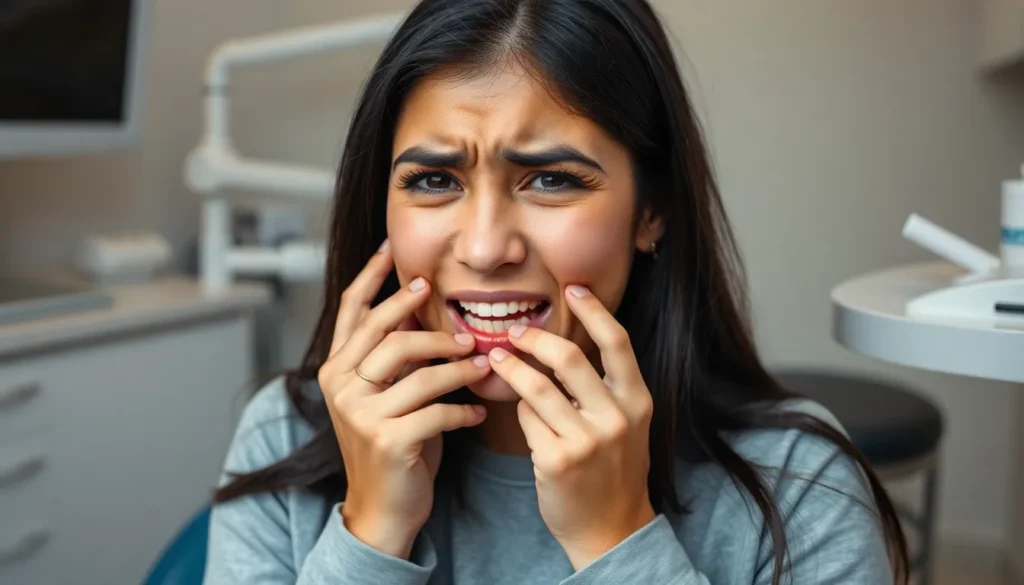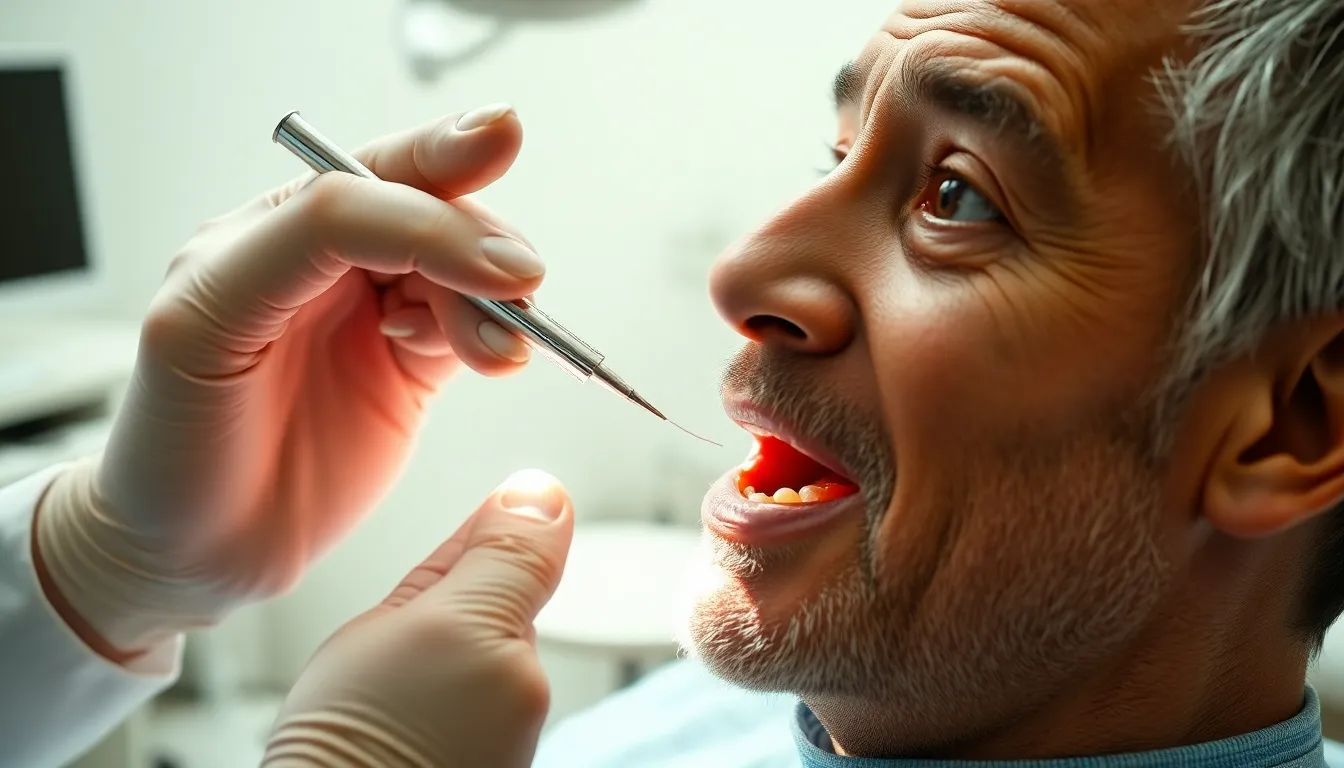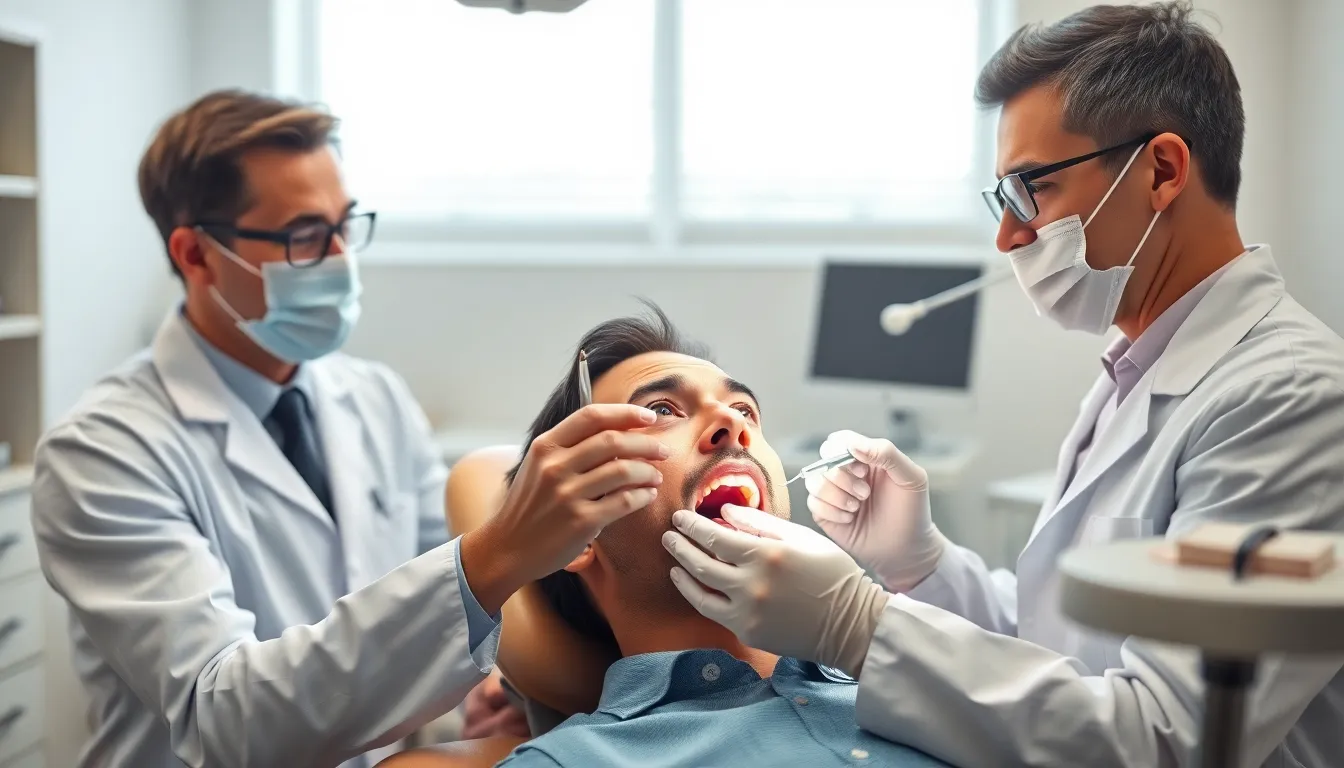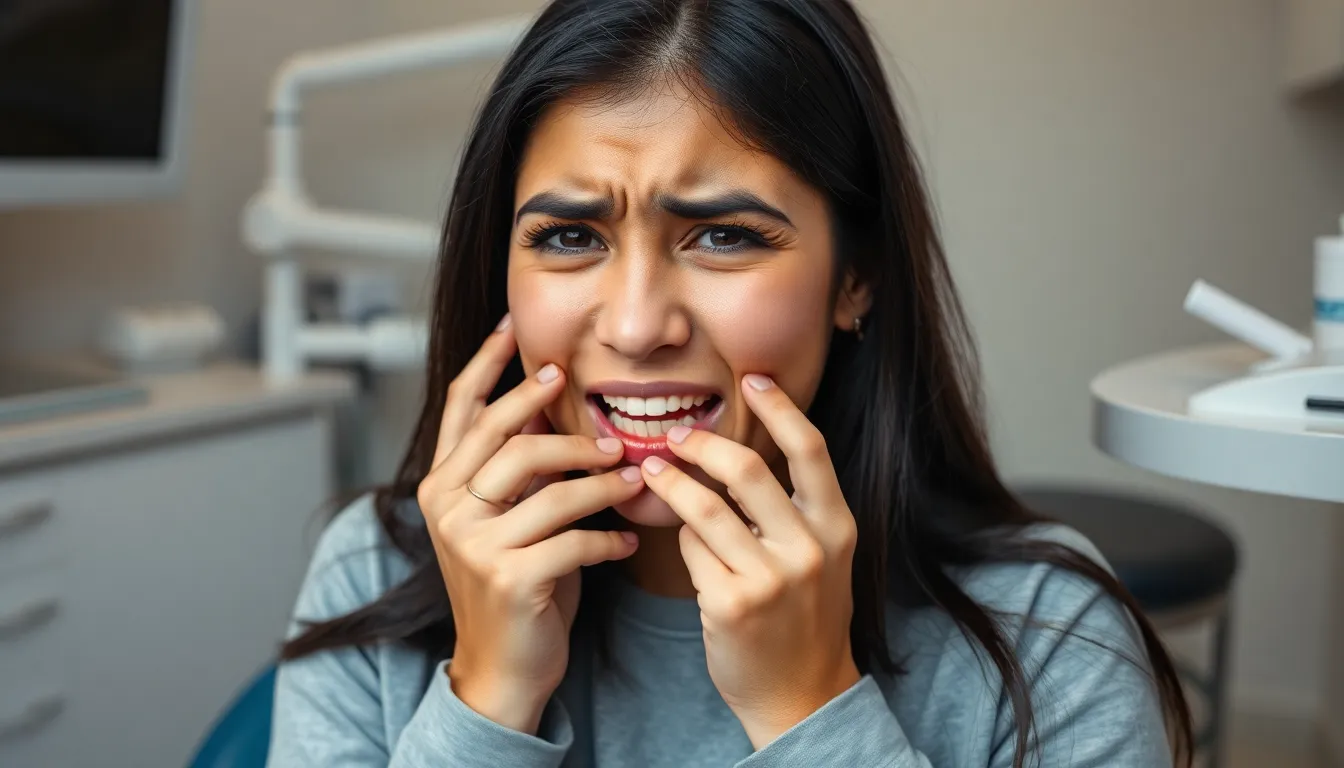Are you experiencing sharp, stabbing pains after having a tooth extracted? Those painful sensations or “punzadas” following a tooth extraction can be concerning and uncomfortable, especially when you’re expecting relief after the procedure.
Tooth extraction pain typically follows a predictable pattern, but when you feel those sharp, shooting sensations, it’s natural to worry about complications. Understanding why these pains occur and knowing when they’re normal versus when they signal a problem can help ease your mind during the recovery process. Let’s explore what causes these post-extraction pains and what you can do to find relief.
Understanding Post-Tooth Extraction Pain
After having a tooth extracted, it’s normal to experience various types of pain during the healing process. Most patients notice that discomfort follows a predictable pattern, typically peaking within the first 24-48 hours before gradually subsiding. Sharp, stabbing pains (punzadas) after an extraction can be particularly concerning when they appear unexpectedly or persist beyond the expected timeline.
Dr. Todd B. Harris explains, “I often see patients return to my office worried about shooting pains after their extraction. These sensations are frequently normal healing responses, but they can sometimes indicate complications that need attention.”
Pain sensations after a tooth extraction vary considerably in their character, intensity, and duration. Throbbing pain typically indicates inflammation at the extraction site, while sharp, electric-like pains might suggest nerve irritation. Dull, persistent aches often represent normal healing processes as bone and tissue regenerate in the socket.
One patient, Maria, shared her experience: “Three days after my molar extraction, I started feeling intense, stabbing pains that would come and go suddenly. I was terrified something had gone wrong, but my dentist explained it was part of the normal nerve healing process. The reassurance helped me manage my anxiety during recovery.”
Temperature sensitivity following extractions frequently occurs when nearby nerves are temporarily irritated. Many patients report sharp pains when consuming hot or cold foods, which typically resolves as healing progresses. This sensitivity differs from persistent pain that doesn’t respond to over-the-counter pain medications.
Common Causes of Throbbing Pain After Tooth Extraction
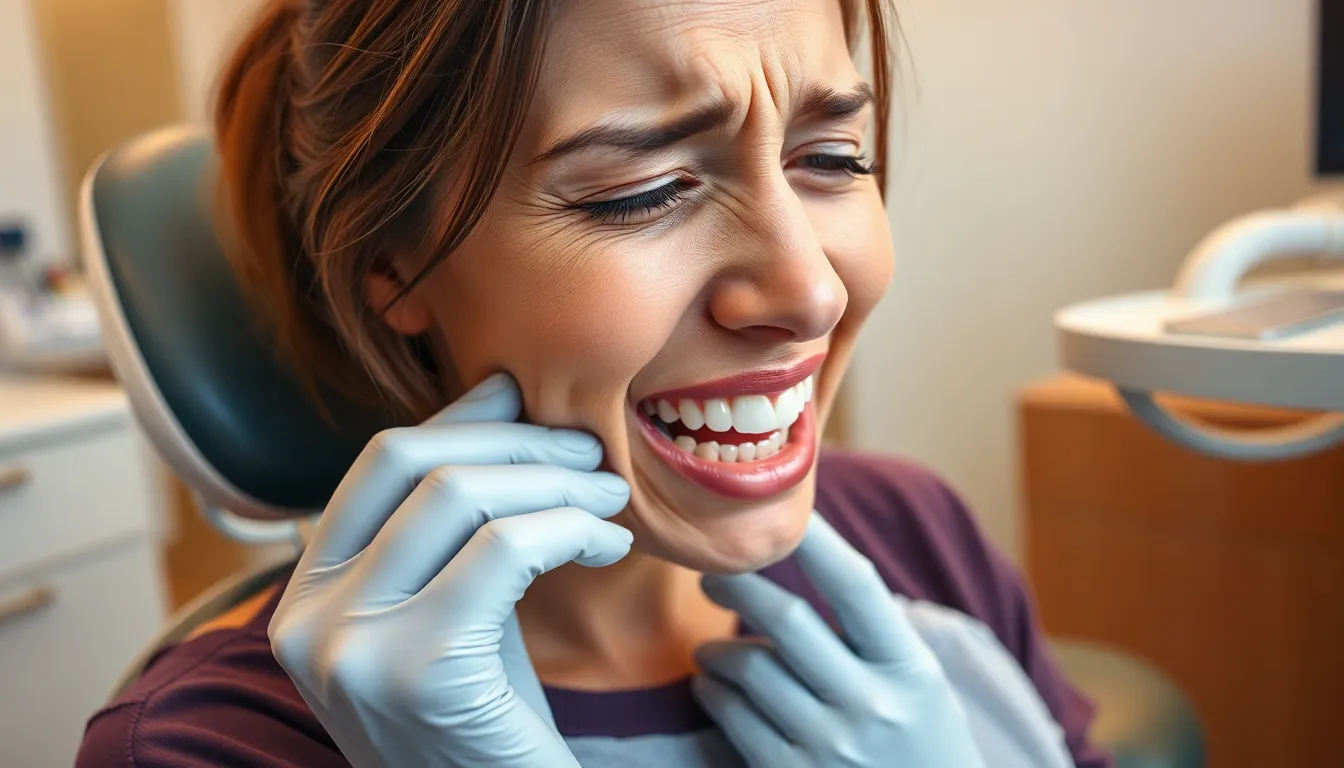
Throbbing pain after a tooth extraction is a normal part of the healing process for many patients, though certain conditions can intensify these sensations. Understanding the underlying causes of these punzadas (stabbing pains) helps differentiate between expected discomfort and potential complications requiring attention.
Normal Healing Process
The formation of a blood clot immediately after extraction marks the beginning of your healing journey, protecting the bone and nerves in the empty socket. Pain typically reaches its peak within the first 24-48 hours post-extraction as inflammation naturally occurs in response to the procedure. Your body initiates tissue regeneration during days 1-7, with soft tissue gradually covering the socket while pain and swelling diminish. Complete healing involves bone remodeling and gum tissue formation over several weeks to months, but the throbbing sensations should steadily decrease if healing progresses normally.
Dr. Todd B. Harris notes, “Many patients describe a rhythmic throbbing that coincides with their heartbeat during the first few days after extraction. This pulsating sensation is often related to increased blood flow to the area as your body works to repair the surgical site.”
Dry Socket
Dry socket occurs when the protective blood clot becomes dislodged or dissolves too early, leaving the bone and nerve endings exposed to air, food, and fluids. Severe, persistent throbbing pain typically emerges 3-5 days after your extraction, distinguishing it from normal post-operative discomfort. Pain from dry socket often radiates to your ear, eye, or neck, creating intense discomfort that over-the-counter medications rarely relieve.
Maria, a 42-year-old patient, shares her experience: “After my wisdom tooth extraction, everything seemed fine for two days. Then suddenly, I felt excruciating throbbing that no pain medication could touch. My dentist diagnosed dry socket and applied a medicated dressing that brought immediate relief.”
Infection
Bacterial infection at the extraction site manifests as intensifying throbbing pain rather than the gradually diminishing discomfort expected during normal healing. Telltale signs include increasing swelling, redness, and possible discharge of pus from the socket several days after the procedure. Fever, unpleasant taste, and general malaise often accompany these symptoms, indicating your body’s response to the infection.
When Throbbing Pain Is Normal vs. When to Be Concerned

Throbbing pain following a tooth extraction is a common experience that most patients encounter during their recovery process. Understanding the difference between normal healing sensations and warning signs of complications helps you determine when to relax and when to seek professional help.
Expected Discomfort Timeline
Normal post-extraction pain follows a predictable pattern that gradually improves over time. During days 1-3 after your extraction, pain and swelling typically intensify, reaching their peak within 48-72 hours. Pain sensations often manifest as rhythmic throbbing that coincides with your heartbeat, as Dr. Todd B. Harris frequently observes in his patients. Between days 4-7, you’ll notice a steady decrease in discomfort as protective granulation tissue forms in the socket. Most patients experience important pain reduction after 7 days, with only mild occasional sensations remaining.
Carlos, a 42-year-old patient, described his experience: “The throbbing was intense for the first two days after my molar extraction, but by day five, I only felt occasional mild pulsing when lying down. My dentist assured me this was completely normal healing progress.”
Warning Signs That Require Medical Attention
Certain pain patterns signal potential complications requiring prompt dental care. Sharp, intense stabbing pains (punzadas) that persist or worsen beyond 7 days post-extraction aren’t normal and often indicate underlying issues. Dry socket, a condition occurring in about 5% of extractions, develops when the protective blood clot dislodges prematurely, exposing bone and nerve endings. This complication produces severe pain radiating toward your ear or eye, accompanied by foul breath and visible bone in the socket.
Home Remedies for Managing Throbbing Pain After Extraction

Effective at-home answers can significantly reduce throbbing pain following a tooth extraction. These remedies provide relief while supporting the natural healing process your body initiates after the procedure.
Cold and Heat Therapy
Cold therapy delivers immediate relief during the first 48 hours after extraction. Apply an ice pack wrapped in a clean cloth to your cheek for 15-20 minutes at a time, taking breaks between applications to prevent skin damage. This method reduces swelling and temporarily numbs the area, decreasing the intensity of throbbing sensations. Many patients find alternating cold therapy sessions throughout the day particularly effective when pain peaks.
“Most of my patients report important relief from throbbing pain when consistently applying cold compresses during the first two days,” says Dr. Todd B. Harris. “The cooling effect helps constrict blood vessels and reduce the inflammation that causes those uncomfortable pulsing sensations.”
Salt Water Rinses
Salt water rinses cleanse the extraction site and reduce inflammation starting 24 hours after your procedure. Create this natural antiseptic by dissolving half a teaspoon of salt in an 8-ounce glass of warm water. Gently swish the solution around your mouth for 30 seconds before carefully spitting it out.
Carlos, a recent extraction patient, shared: “The salt water rinses made a noticeable difference in my comfort level. They provided a soothing sensation that temporarily calmed the throbbing, especially after meals when food particles near the site were causing irritation.”
Perform these rinses 3-4 times daily, particularly after eating, but avoid aggressive swishing that might dislodge the protective blood clot. Additional soothing methods include placing a moistened tea bag directly on the extraction site, as the tannins in tea help reduce pain and promote healing. Over-the-counter pain medications like ibuprofen or acetaminophen can also effectively manage inflammation and discomfort when taken as directed.
Medical Treatments for Post-Extraction Pain

Managing pain effectively after a tooth extraction is crucial for a comfortable recovery. Proper medication choices can significantly reduce those uncomfortable stabbing sensations (punzadas) and help you heal faster.
Over-the-Counter Pain Medications
The most effective approach for dental surgery pain relief combines ibuprofen and acetaminophen taken together every 6 hours. This powerful combination provides superior pain control compared to using either medication alone or even opioid medications. Ibuprofen tackles inflammation and swelling that often cause those sharp, stabbing pains, while acetaminophen delivers additional pain relief through different mechanisms. Topical numbing agents like Orajel can offer temporary relief when applied directly to sensitive areas. Remember to stay under 4000 mg of acetaminophen daily to protect your liver health.
“Many of my patients are surprised when I tell them this simple combination works better than prescription painkillers,” explains Dr. Todd B. Harris. “The research clearly shows this approach not only controls pain effectively but does so with fewer side effects.”
Prescription Options
For complex extractions like impacted wisdom teeth removal, your dentist might prescribe stronger medications when over-the-counter options prove insufficient. Large clinical studies demonstrate that non-opioid combinations actually outperform opioid medications in controlling post-extraction pain. Prescription-strength NSAIDs or steroid medications like dexamethasone can prevent severe swelling in challenging cases. Antibiotics may be prescribed to prevent infection, and it’s essential to complete the full course even if symptoms improve.
Maria, who experienced severe stabbing pain after her molar extraction, shares: “My dentist prescribed a short course of prescription anti-inflammatories along with the ibuprofen-acetaminophen combination. The difference was remarkable—those sharp pains subsided within hours, and I could finally get some sleep.”
Applying ice packs intermittently (15 minutes on, 15 off) during the first 24-48 hours can significantly reduce swelling and numb the area for additional comfort. This cooling therapy complements medication by physically restricting blood flow to the extraction site, limiting inflammation that triggers pain signals.
Prevention Tips for Reducing Post-Extraction Discomfort
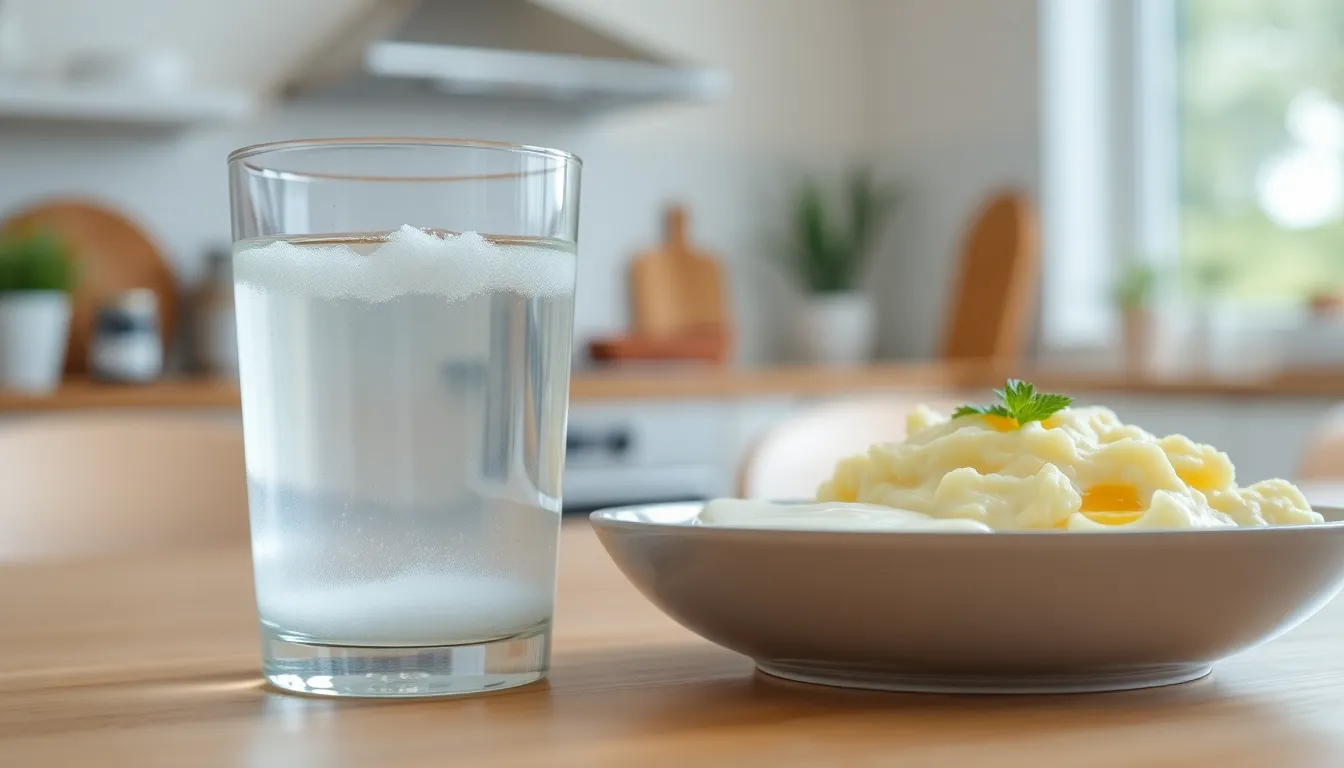
Managing discomfort after a tooth extraction starts with proper preventive measures. By following these targeted strategies, you’ll experience fewer stabbing pains (“punzadas”) and enjoy a smoother recovery process.
Medication Management
Take prescribed painkillers or over-the-counter pain relievers exactly as directed by your dentist. A combination of ibuprofen and acetaminophen taken every 6 hours provides superior pain control compared to using either medication alone. Dr. Todd B. Harris explains, “This dual-medication approach blocks pain through different pathways, giving patients more complete relief from those sharp, stabbing sensations that can occur after molar extractions.”
Saltwater Rinse Protocol
Gently rinse your mouth with warm saltwater solution (½ teaspoon salt in 1 cup warm water) starting 24 hours after extraction. These rinses cleanse the site while reducing inflammation without disturbing the healing blood clot. Maria, a recent extraction patient, shared, “The saltwater rinses were a game-changer for me – they immediately reduced the sharp pains I felt and gave me a sense of cleanliness that helped ease my anxiety about infection.”
Strategic Cold Therapy
Apply ice packs wrapped in a towel to your cheek near the extraction site using a 20-minutes-on, 20-minutes-off rotation during the first 24 hours. Cold therapy reduces swelling and numbs the area, providing immediate relief from stabbing sensations. Switch to warm compresses after the initial 24-hour period to soothe tense jaw muscles.
Protective Dietary Choices
Stick to soft, easy-to-chew foods like yogurt, mashed potatoes, soups, and well-cooked vegetables. Avoiding hard, crunchy, or chewy foods prevents irritation to the extraction site and protects the crucial blood clot. Foods at moderate temperatures are preferable, as temperature extremes can trigger sharp pains due to nerve sensitivity.
Oral Hygiene Adaptations
Keep your mouth clean without disrupting the healing site. Brush gently around but not directly over the extraction area until healing progresses. Dr. Harris recommends, “Focus on maintaining cleanliness of surrounding teeth while giving the extraction site space to heal undisturbed – this balance helps prevent infection while protecting the sensitive nerves that can cause those alarming sharp pains.”
Rest Position Techniques
Elevate your head while resting or sleeping to minimize swelling and reduce pressure on the extraction site. Limiting strenuous physical activities for the first 3-5 days prevents increased blood pressure that can intensify throbbing and sharp pains. Carlos, another extraction patient, noted, “Simply keeping my head elevated while sleeping reduced my morning pain by at least half – I wish I’d known this simple trick from day one.”
Smoking and Alcohol Restrictions
Avoid smoking and drinking alcohol for at least 72 hours following extraction. These substances restrict blood flow to the healing site and significantly increase the risk of developing dry socket, which causes intense stabbing pains. Many patients report that avoiding these habits alone prevents the most severe post-extraction complications.
Conclusion
Those sharp pains after your tooth extraction will typically resolve as healing progresses. By following your dentist’s aftercare instructions and implementing the pain management strategies discussed you can significantly improve your recovery experience.
Remember that while some discomfort is normal combining proper medication timing with cold therapy salt water rinses and dietary adjustments will help minimize your pain. Most importantly know when to seek professional help if you experience severe persistent pain beyond a week or signs of infection.
With patience and proper care your extraction site will heal successfully and those uncomfortable punzadas will soon be just a memory. Trust the healing process but don’t hesitate to contact your dental professional if something doesn’t feel right.
Frequently Asked Questions
Is sharp, stabbing pain normal after a tooth extraction?
Yes, some sharp pain can be normal during healing. Sharp sensations often occur as nerves heal and may feel like shooting, electric-like pains. These typically peak within 24-48 hours post-extraction and gradually subside. However, intense stabbing pain that persists beyond 7 days may indicate complications and requires dental attention.
What causes throbbing pain after a tooth extraction?
Throbbing pain is typically caused by inflammation during the normal healing process. Many patients experience rhythmic throbbing that coincides with their heartbeat during the initial healing days. More severe throbbing may indicate complications like dry socket (when the protective blood clot becomes dislodged) or infection at the extraction site.
How long does pain typically last after a tooth extraction?
Pain and swelling usually intensify during the first 1-3 days, peaking within 48-72 hours. By day 5-7, discomfort should significantly decrease as protective granulation tissue forms. Most patients experience gradual improvement each day. Pain that intensifies after day 3 or persists beyond a week may indicate complications.
What is dry socket and how can I identify it?
Dry socket occurs when the protective blood clot becomes dislodged from the extraction site, usually 3-5 days after the procedure. Symptoms include severe, persistent throbbing pain, bad breath, unpleasant taste, and visible bone in the socket. This condition requires immediate dental attention for placement of a medicated dressing to relieve pain.
What are effective ways to manage pain after a tooth extraction?
Effective pain management includes alternating cold therapy during the first 48 hours, gentle salt water rinses (starting 24 hours post-extraction), applying moistened tea bags to the site, and taking over-the-counter pain medications. A combination of ibuprofen and acetaminophen taken every 6 hours provides superior pain control compared to either medication alone.
When should I contact my dentist about post-extraction pain?
Contact your dentist if you experience: sharp pain persisting beyond 7 days, severe pain that worsens after 3 days, significant swelling that increases after 72 hours, fever above 100.4°F, pus discharge, persistent bleeding, or difficulty swallowing or breathing. These symptoms may indicate infection or other complications requiring immediate attention.
Can I use ice to reduce pain after tooth extraction?
Yes, ice therapy is highly recommended for the first 24-48 hours. Apply ice packs to the outside of your face near the extraction site for 15-20 minutes, then remove for at least 20 minutes before reapplying. This helps reduce swelling, numb the area, and constrict blood vessels to minimize bleeding and inflammation.
What foods should I eat after a tooth extraction?
Stick to soft, lukewarm foods that require minimal chewing for the first few days. Good options include yogurt, smoothies, mashed potatoes, scrambled eggs, and lukewarm soups. Avoid very hot or cold foods, spicy items, crunchy foods, and using straws. Gradually reintroduce normal foods as healing progresses and comfort allows.

